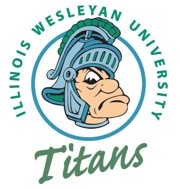Below is a summary of the abstract you submitted. Presenting author(s) is shown in bold.
If any changes need to be made, you can modify the abstract or change the authors.
You can also download a .docx version of this abstract.
If there are any problems, please email Dan at dar78@pitt.edu and he'll take care of them!
This abstract was last modified on March 20, 2024 at 1:55 p.m..

Bacteriophages, viruses that target and kill bacteria, are highly abundant across the globe, with an estimated 10³¹ believed to exist. Their microscopic size, however, has allowed them to remain largely unexplored by the scientific community. Phage hunters have only just begun to scrape the surface of knowledge of these ubiquitous entities. Due to their individual unique properties and vast diversity, phages are a vital part of learning about molecular biology and genomics. After gathering environmental samples from water and soil, we as a class identified and isolated seventeen different phages, eleven that came from soil samples and infected the host bacterium, Microbacterium foliorum and six from water samples that infected Rhodobacter capsulatus. Transmission Electron Microscopy revealed all of our isolates to have siphoviral morphology and allowed for a prediction of probable clusters for each phage. Ultimately, eight of our phages were chosen for full genomic DNA sequencing (two from M. foliorum and all 6 from R. capsulatus). We have analyzed and annotated the sequenced genomes of all of these phages. The six R. capsulatus phages can be grouped into two relatively common clusters while the two Microbacterium phages, FarmerDoug and Jollipop, were found to be members of the EA1 and EC clusters respectively. Additional characterization of these phages and comparison with other known members will be presented. Our data is able to further contribute to the large database of phages that continues to grow and allows microbiologists and the scientific community to gain more knowledge on how phages evolve and influence bacterial evolution.
